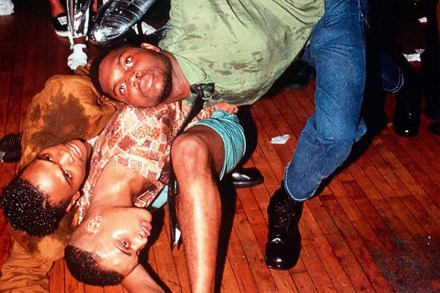Yes sir, we can boogie
It’s dance — but not as you know it. A giddy mass of flying limbs, sashaying hips and pouty faces. Hands now stretched up high and fluttering as in flamenco, now on the ground buttressing cantilevered bodies and holding on to legs that seem to want to escape their owners. ‘I saw things I never



